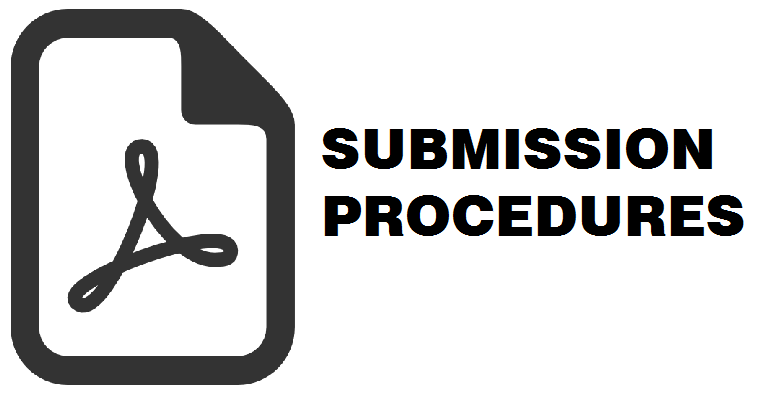Pemodelan Spasial Lahan Terbangun Kota Jambi
Ayu Mardalena(1*), Supriatna Supriatna(2), Muhammad Dimyati(3)
(1) Departmen Geografi, Fakultas Matematika dan Ilmu Pengetahuan Alam, Universitas Indonesia, Depok, Indonesia
(2) Departmen Geografi, Fakultas Matematika dan Ilmu Pengetahuan Alam, Universitas Indonesia, Depok, Indonesia
(3) Departmen Geografi, Fakultas Matematika dan Ilmu Pengetahuan Alam, Universitas Indonesia, Depok, Indonesia
(*) Corresponding Author
Abstract
Abstrak. Kota Jambi memiliki kepadatan penduduk tertinggi di Provinsi Jambi, yang mendorong perubahan penggunaan lahan akibat ketidakseimbangan antara pertumbuhan populasi dan ketersediaan lahan. Penelitian ini bertujuan untuk menganalisis dinamika penutup lahan terbangun dari tahun 2013 hingga 2023 dan mensintesis prediksi penutup lahan terbangun tahun 2033 terhadap Rencana Tata Ruang Wilayah (RTRW). Penelitian ini menggunakan metode klasifikasi terbimbing dengan algoritma Random Forest (RF) pada citra satelit Landsat 8 untuk menganalisis perubahan dari tahun 2013, 2016, 2019, hingga 2023 yang telah diuji akursi dan validasi menggunakan indeks kappa. Untuk prediksi penutup lahan masa depan tahun 2033, digunakan metode MLP-CAMC melalui perangkat lunak Terrset 2020, dengan mempertimbangkan variabel seperti lereng, jarak dari jalan, jarak dari badan air (sungai dan danau), jarak dari pusat ekonmi, jarak dari sekolah, dan jarak dari prasarana tranportasi. Hasil penelitian menunjukkan bahwa luas lahan terbangun di Kota Jambi diproyeksikan meningkat secara signifikan hingga mencapai 11.892,52 hektar atau 70,41% dari total luas wilayah pada tahun 2033 Peningkatan ini terkonsentrasi di wilayah dengan kemiringan tanah datar hingga landai, dengan jarak dari jalan sebagai faktor paling berpengaruh. Pertumbuhan pesat lahan terbangun terutama terjadi di Kecamatan Paal Merah, Alam Barajo, dan Kota Baru. Dari sisi analisis kesesuaian dengan RTRW, pada tahun 2033 lahan terbangun diproyeksikan memiliki tingkat kesesuaian sebesar 90,5% terhadap kategori peruntukan lahan terbangun yang direncanakan, sementara 9,5% sisanya tergolong tidak sesuai. Penelitian ini menekankan pentingnya pengelolaan tata ruang yang terencana untuk mengantisipasi dampak negatif pertumbuhan lahan terbangun. Pengawasan ketat dan evaluasi RTRW secara berkala diperlukan guna mendukung pembangunan berkelanjutan di Kota Jambi.
Abstract. Jambi experiences the highest population density in Jambi Province, which significantly impacts land use due to the mismatch between population growth and land availability. This study aims to analyze the dynamics of built-up area from 2013 to 2023 and synthesize projections for built-up area in 2033 in accordance with the Regional Spatial Plan (RTRW). The research employs a supervised classification method utilizing the Random Forest (RF) algorithm on Landsat 8 satellite imagery to track changes from the years 2013, 2016, 2019, and 2023, with accuracy validated using the kappa index. For forecasting land cover in 2033, the MLP-CAMC method was applied through Terrset 2020 software, incorporating factors such as slope, proximity to roads, distance from water bodies (including rivers and lakes), distance to economic centers, proximity to schools, and access to transportation infrastructure. The findings indicate a significant projected increase in built-up land in Jambi City, reaching 11,892.52 hectares or 70.41% of the total area by 2033. This growth is primarily concentrated in flat to gently sloping areas, with proximity to roads identified as the most influential factor. Notable expansion of built-up land is particularly observed in the subdistricts of Paal Merah, Alam Barajo, and Kota Baru. In terms of alignment with the RTRW, the projected built-up land for 2033 is anticipated to achieve a compatibility rate of 90.5% with the designated land-use categories, while 9.5% is classified as non-compliant. This study highlights the necessity of strategically planned spatial management to mitigate the adverse effects of built-up land expansion. Rigorous monitoring and regular evaluations of the RTRW are crucial to support sustainable development in Jambi City.
Submitted: 2024-07-09 Revisions: 2024-12-06 Accepted: 2025-02-17 Published: 2024-02-17
Keywords
Full Text:
PDFReferences
Akbar, G. D. P. N., & Setiawan, B. (2022). Analisis Penurunan Muka Tanah Kota Jambi Dengan Metode Differential Interferometry Synthetics Aperture Radar Tahun 2016 - 2021. Jurnal Geosains Dan Remote Sensing, 3(1), 20-29. https://doi.org/10.23960/jgrs.2022.v3i1.71
Alam, S., Hasan, F., Debnath, M., & Rahman, A. (2023). Morphology and land use change analysis of lower Padma River floodplain of Bangladesh. Environmental Monitoring and Assessment, 195(7). https://doi.org/10.1007/s10661-023-11461-w PMid:37358657
Ambarwulan, W., Yulianto, F., Widiatmaka, W., Rahadiati, A., Tarigan, S. D., Firmansyah, I., & Hasibuan, M. A. S. (2023). Modelling land use/land cover projection using different scenarios in the Cisadane Watershed, Indonesia: Implication on deforestation and food security. Egyptian Journal of Remote Sensing and Space Science, 26(2), 273-283. https://doi.org/10.1016/j.ejrs.2023.04.002
Anonim. (2022a, February 9). 22 Kelurahan Rawan banjir, Pemkot Jambi Alokasikan Rp 25 Miliar. Https://Jambiprima.Com/Read/2022/02/09/14301/22-Kelurahan-Rawan-Banjir-Pemkot-Jambi-Alokasikan-Rp-25-Miliar/.
Anonim. (2022b, November 12). Sebanyak 500 Rumah Terendah Banjir di Kota Jambi. Https://Www.Metrojambi.Com/Metro/13556027/Sebanyak-500-Rumah-Terendam-Bajir-Di-Kota-Jambi.
Asadi, M., Oshnooei-Nooshabadi, A., Saleh, S. S., Habibnezhad, F., Sarafraz-Asbagh, S., & Van Genderen, J. L. (2022). Urban Sprawl Simulation Mapping of Urmia (Iran) by Comparison of Cellular Automata-Markov Chain and Artificial Neural Network (ANN) Modeling Approach. Sustainability (Switzerland), 14(23), 15625. https://doi.org/10.3390/su142315625
Badan Standarisasi Nasional. (2010). Klasifikasi penutup lahan-Bagian 1: Skala kecil dan menengah. Badan Standarisasi Nasional. www.bsn.go.id
BNPB. (2023, December 4). Infografis Bencana Alam Indonesia Tahun 2022. Https://Bnpb.Go.Id/Infografis/Infografis-Bencana-Tahun-2022.
BPS Kota Jambi. (2023). Kota Jambi Dalam Angka 2023 (BPS Kota Jambi, Ed.). BPS Kota Jambi.
Dede, M., Asdak, C., & Setiawan, I. (2022). Spatial dynamics model of land use and land cover changes: A comparison of CA, ANN, and ANN-CA. Register: Jurnal Ilmiah Teknologi Sistem Informasi, 8(1), 38-49. https://doi.org/10.26594/register.v8i1.2339
Gharaibeh, A., Shaamala, A., Obeidat, R., & Al-Kofahi, S. (2020). Improving land-use change modeling by integrating ANN with Cellular Automata-Markov Chain model. Heliyon, 6(9), e012069. https://doi.org/10.1016/j.heliyon.2020.e05092 PMid:33024869 PMCid:PMC7527583
Girma, R., Fürst, C., & Moges, A. (2022). Land use land cover change modeling by integrating artificial neural network with cellular Automata-Markov chain model in Gidabo river basin, main Ethiopian rift. Environmental Challenges, 6, 100419. https://doi.org/10.1016/j.envc.2021.100419
Irawan, L. Y., Sumarmi, Bachri, S., Panoto, D., Pradana, I. H., & Faizal, R. (2021). Landslides susceptibility mapping based on geospatial data and geomorphic attributes (a case study: Pacet, Mojokerto, East Java). In Sumardi (Ed.), IOP Conference Series: Earth and Environmental Science (Vol. 747, Issue 1). IOP Publishing Ltd. https://doi.org/10.1088/1755-1315/747/1/012002
Kumar, V., Singh, V. K., Gupta, K., & Jha, A. K. (2021). Integrating Cellular Automata and Agent-Based Modeling for Predicting Urban Growth: A Case of Dehradun City. Journal of the Indian Society of Remote Sensing, 49(11), 2779-2795. https://doi.org/10.1007/s12524-021-01418-2
Leta, M. K., Demissie, T. A., & Tränckner, J. (2021). Modeling and prediction of land use land cover change dynamics based on land change modeler (Lcm) in nashe watershed, upper blue nile basin, Ethiopia. Sustainability (Switzerland), 13(7), 3740. https://doi.org/10.3390/su13073740
Liu, H., Zheng, M., Liu, J., & Zheng, X. (2020). Sustainable land use in the trans-provincial marginal areas in China. Resources, Conservation and Recycling, 157. https://doi.org/10.1016/j.resconrec.2020.104783
Mathewos, M., Lencha, S. M., & Tsegaye, M. (2022). Land Use and Land Cover Change Assessment and Future Predictions in the Matenchose Watershed, Rift Valley Basin, Using CA-Markov Simulation. Land, 11(10), 1632.https://doi.org/10.3390/land11101632
Nasional, B. S. (2014). Standar Nasional Indonesia Klasifikasi penutup lahan. www.bsn.go.id
Peraturan Daerah Kota Jambi Nomor 09 Tahun 2013 Tentang Rencana Tata Ruang Wilayah Kota Jambi Tahun 2013-2033, Pub. L. No. 09, Peraturan Daerah Kota Jambi (2013).
Peraturan Walikota Jambi Nomor 20 Tahun 2023 Tentang Rencana Kerja Pemerintah Daerah (RKPD) Kota Jambi Tahun 2024, Pub. L. No. 20, Bappeda Kota Jambi (2023).
Purwanto, T. (2013). Perubahan Penggunaan Lahan Pada Wilayah Sub-Urban Kota Jambi [Tesis]. Universitas Indonesia.
Taheri, K., Missimer, T. M., Mohseni, H., Fidelibus, M. D., Fathollahy, M., & Taheri, M. (2021). Enhancing spatial prediction of sinkhole susceptibility by mixed waters geochemistry evaluation: application of ROC and GIS. Environmental Earth Sciences, 80(14). https://doi.org/10.1007/s12665-021-09763-8
Tino, S., Junaidi, A. ;, Prodi, Y., Pembangunan, E., Ekonomi, F., & Bisnis, D. (2019). Faktor-faktor yang mempengaruhi migrasi masuk di Kota Jambi (studi kasus etnis Jawa di Kelurahan Buluran Kenali). Ekonomi Sumberdaya Dan Lingkungan , 8(1), 2303-1220.https://doi.org/10.22437/jels.v8i1.11964
Umar, D. A., Ramli, M. F., Tukur, A. I., Jamil, N. R., & Zaudi, M. A. (2021). Detection and prediction of land use change impact on the streamflow regime in Sahelian river basin, northwestern Nigeria. H2Open Journal, 4(1), 92-113.https://doi.org/10.2166/h2oj.2021.065
Zhang, Z., Hörmann, G., Huang, J., & Fohrer, N. (2023). A Random Forest-Based CA-Markov Model to Examine the Dynamics of Land Use/Cover Change Aided with Remote Sensing and GIS. Remote Sensing, 15(8), 2128. https://doi.org/10.3390/rs15082128
Article Metrics
Refbacks
- There are currently no refbacks.
Copyright (c) 2025 Author and Majalah Geografi Indonesia

This work is licensed under a Creative Commons Attribution-ShareAlike 4.0 International License.
Volume 35 No 2 the Year 2021 for Volume 39 No 1 the Year 2025
ISSN 0215-1790 (print) ISSN 2540-945X (online)








